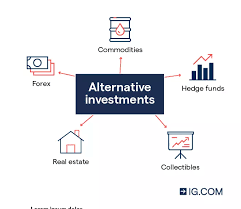The dream of owning a home transforms from just a mere dream into a lifetime goal, as one advances in age. This is occasioned from one yearning to settle down or by having a family and therefore owning a home brings about some form of stability. At other times, the freedom and the pride of owning a home becomes a drive to actually transforming your dream into reality, as it acts as a hall mark of one’s financial success. However, owing a house is capital intensive and one’s savings might not be enough to cater for the cost of construction or the buying price for your dream house. This has been a major obstacle as the medium income for people in Kenya is Kshs 50,000, according to the Kenya National Bureau of statistics.
The National Government, through the Retirement Benefit Regulations, has enabled members of retirement benefit schemes to own homes through the Retirement Benefit (Mortgage Loans) Regulations, 2020. This regulation has provisions on how members can be able to utilize their benefits to own a home. Some of this provisions include:
- Mortgage Loans – Members are allowed to use up to a maximum of 60.0% of their accrued benefits or the market value of the property, whichever is less, as collateral for mortgage loans. The accrued benefits constitute of the total contribution plus the interest earned from those contributions.
The advantage of using member’s retirement benefit as collateral for mortgage loans is that it enables the members to bypass the traditional mortgage norm where by the financial institutions only provide 80.0% of the amount needed, while the member is left to raise the remaining 20.0% to cater for the initial cost to be incurred such as the Stamp duty, legal and other cost. Members can now use their 60.0% of their benefits as collateral and the financial institutions provides 100.0% of total amount needed to purchase or build the property, and,
- Purchase of Residential house – Members can also use a maximum of 40.0% of their accrued benefits, subject to a maximum limit of Kshs 7.0 million, or the market value of the property, to purchase a property, whichever is less. Therefore, in the event that the property value is more than Kshs 7.0 million, the Retirement benefit scheme can only allow the member to withdraw up to a maximum of Kshs 7.0 million. However, if 40.0% of the accrued benefits is less than Kshs 7.0 million, then the Retirement benefit scheme will cap the maximum amount disbursed to the member to 40.0% of the total accrued benefits. The member can then voluntarily top up the portion of the benefits available from the retirement benefit scheme to purchase a house whose market value is more than Kshs 7.0 million or 40.0% of their accrued benefits. The expenses and the tax related to the purchase of the property shall be borne by the member
However, in order to enjoy these benefits, there are certain requirements, according to the new regulations, which members need to meet. They include:
- A member who is receiving pension, or has taken early retirement, or has attained the age of retirement shall not be eligible to utilize a portion of the benefits to purchase a residential house or use it as collateral for Mortgage loan,
- A member shall only be permitted to utilize the member’s accrued benefits only once for the purchase of a residential house and to secure the first mortgage of the house in respect to the loan. However, if the member already has a mortgage facility at the time of application, the member shall not be allowed to utilize the member’s accrued benefits to offset the balance from the mortgage facility but can use the accrued benefits to secure the mortgage facility in the event it was an unsecured loan.
- The member has to comply with the member’s schemes procedures when making the application to purchase a residential house or to use the member’s benefits as collateral for mortgage facility.
In conclusion, being a member of a retirement benefit scheme will not only enable you to have a source of income during your retirement years but also enable you to have a place you can call home once you retire. This will reduce the burden of the retiree from having to contribute the 20.0% of the property value when seeking for mortgage facility or the recurrent rental expense the member will incur at retirement as the member will have his or her own house.


















